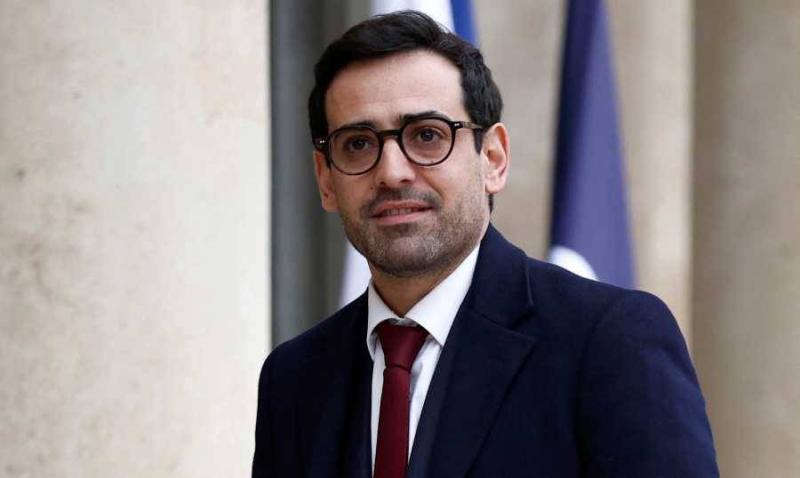The objectives of the French paper aimed at preventing the escalation of total war within Lebanon align with the overarching themes stipulated in Resolution 1701. The existential basis of the international resolution represented a call for a cessation of hostilities and military attacks between Hezbollah and Israel immediately following the July 2006 war. This aligns fundamentally with the proposed plan presented by French Foreign Minister Stéphane Séjourné during his visit to Lebanon, crafted to reduce skirmishes and achieve a truce that prevents the flames of war, compelling both Lebanese and Israeli sides to cease military operations according to “An-Nahar”.
The call for ending combat between Hezbollah and Israel was the essence of Resolution 1701, and it is clear that the same terminology was used at that time to urge a "cessation of hostilities and military attacks between the two sides." While the current French paper proposed negotiations to resolve disputes along the Blue Line through a joint UN-Israeli-Lebanese military committee without mentioning the Shebaa Farms, Resolution 1701 confirmed its support for the strict respect of the Blue Line. The French proposal also included the idea of strengthening the Lebanese Army's presence in the border area in southern Lebanon, which contributes to the realization of a key point in 1701 that called for the Lebanese government and UNIFIL to deploy their forces in southern Lebanon and support the Lebanese armed forces.
What are the similarities then between the French paper and the international resolution that helped end the war in southern Lebanon? There is a clear support in both documents for the principles established in the operation of international peacekeeping forces and for further enhancing their mission and equipment south of the Litani River.
Where then lies the difference between the proposed French plan to resolve the border conflict between Lebanon and Israel and the points included in Resolution 1701? It is true that the French paper discussed by the French foreign minister with Lebanese officials emphasized the importance of establishing an area between the Blue Line and the Litani River that is devoid of any armed individuals, military equipment, and weapons, except for those belonging to the Lebanese Armed Forces and UNIFIL. However, the French paper suggested that all fighters affiliated with Hezbollah, along with their military capabilities such as anti-tank systems, withdraw at least 10 kilometers north of the border, provided that Tel Aviv halts its military violations.
On the other hand, the UN resolution that ended the war between Lebanon and Israel in 2006 allowed for a withdrawal of up to 30 kilometers, indicating broader and more comprehensive proposals contained in 1701 without overlooking the necessity of affirming the Lebanese government’s authority over all Lebanese territories in accordance with the provisions of resolutions 1559 and 1680 and the relevant aspects of the Taif Agreement. Resolution 1701 stipulated the necessity of the absence of any weapons without the approval of the Lebanese government and the absence of any authority other than that of the Lebanese government. It did not neglect to reference the demarcation of Lebanon's international borders, particularly in areas where the borders are disputed or uncertain, including attention to the issue of the Shebaa Farms, which remained outside the scope of the French paper.
Furthermore, while 1701 decided to allow an increased deployment of international peacekeeping forces in southern Lebanon after the end of the war and invited member states to consider providing their appropriate contributions and meeting requests for international force assistance, the French paper suggested deploying additional Lebanese Army forces and supporting them with funding and equipment, calling on friends of Lebanon for consultations aimed at securing support.
In the meantime, there is a proposed point in the French paper that has generated some internal debate, according to "An-Nahar". There are questions about whether it can currently be implemented and approved, regarding the necessity for all armed Lebanese groups to demolish all buildings and facilities close to the borders and for the fighting forces to withdraw from them alongside the removal of weapons. While the caretaker government had maintained silence in the past regarding the ideas contained in the French paper since receiving them, there are questions raised in political circles about the official Lebanese stance on its details, especially given that it supports in principle Resolution 1701, which is considered more comprehensive in its provisions.
According to data obtained by "An-Nahar" and circulated within certain circles of the Lebanese Prime Minister’s office, the reluctance to discuss official government positions on the French paper received by caretaker Prime Minister Najib Mikati comes from considering that the paper still represents proposed ideas and is not an official plan, emphasizing the Prime Minister’s office’s support for the application of international Resolution 1701 and related international resolutions, including the ceasefire agreement. Discussions have taken place between the Prime Minister and the French foreign minister, including the enhancement of the Lebanese Army's role, which requires supportive resources for its deployment southward. The perspective of the Lebanese government’s office emphasizes the need to cease Israeli attacks on Lebanese territory and only then to move on to discussing details that contribute to implementing international Resolution 1701.




